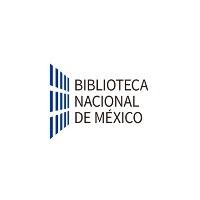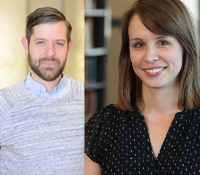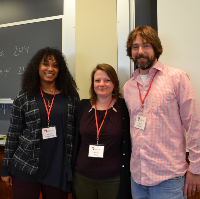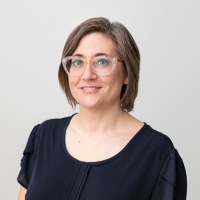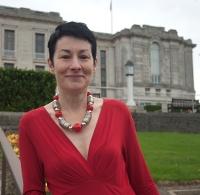Blog
Unless otherwise stated, content is shared under CC-BY-NC Licence
It Takes a Village… to Manage Digital Assets
Helen Hockx-Yu is Enterprise Data Architect at the University of Notre Dame in the USA
The University of Notre Dame (UND) is a private research university located in the United States. I joined UND in 2016 as a programme manager for digital asset management. Since 2009, various initiatives have taken place to address the challenge but they have largely been specific in their scope and not broadly adopted across the University as a whole. I was expected to build on the previous work, to refocus and come up with a new plan. My web archiving and digital preservation background were thought to be relevant and helpful - the executives who entrusted me with this important work were the University Librarian and the then Chief Information Officer.
My first challenge was to understand the definition and scope of digital asset management, as the term often relates to rich media such as digital videos, animation, graphics, photographs, audio files, logos and marketing collateral. Digital Asset Management (DAM) systems emerged in the 1990s in the private sector to support digital media creation, marketing, publishing and brand management, and their customer-base mainly consists of commercial organisations.
Perspective in Digital Preservation
Alberto Castro Thompson, Ana Yuri Ramírez Molina and Lisandro Pablo Olivares work in the Innovation and Digital Strategy Coordination (CIED) team at Biblioteca Nacional de México
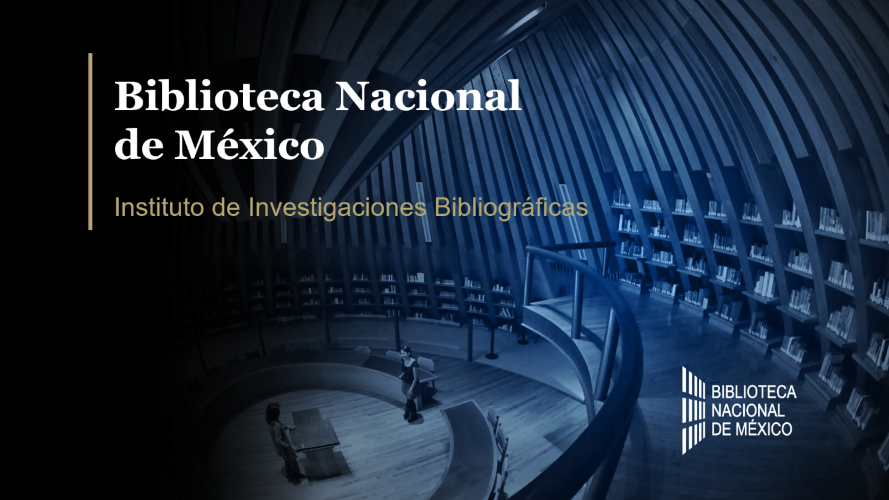
The National Library of Mexico (BNM) is legally empowered by a Decree of Legal Deposit of national scope since 1812[i] and last modified in 1991, being in this reform where publications in electronic formats are included for the first time.
Preserving Research Data: Finding Our Legs at Scholars Portal
Grant Hurley is Digital Preservation Librarian, Scholars Portal and Meghan Goodchild is Research Data Management Systems Librarian, Scholars Portal/Queen’s University Library. They are based in Ontario, Canada
As a service provider, Scholars Portal is building a suite of services and infrastructure to support the research data management and preservation in Canada. But a key gap is the ability of our member institutions to make use of these services when there is a lack of policies, procedures, strategies and resources at the local level. This post outlines our work to support research data preservation workflows through an integration project between Dataverse and Archivematica. And it offers some observations on the challenges facing the uptake of these tools that means the preservation of research data continues to be at risk.
Community Standards for 3D Data Preservation
Jennifer Moore (Washington University in St. Louis), Adam Rountrey (University of Michigan Museum of Paleontology) and Hannah Scates Kettler (Iowa State University) are Primary Investigators for CS3DP (Community Standards for 3D Data Preservation)
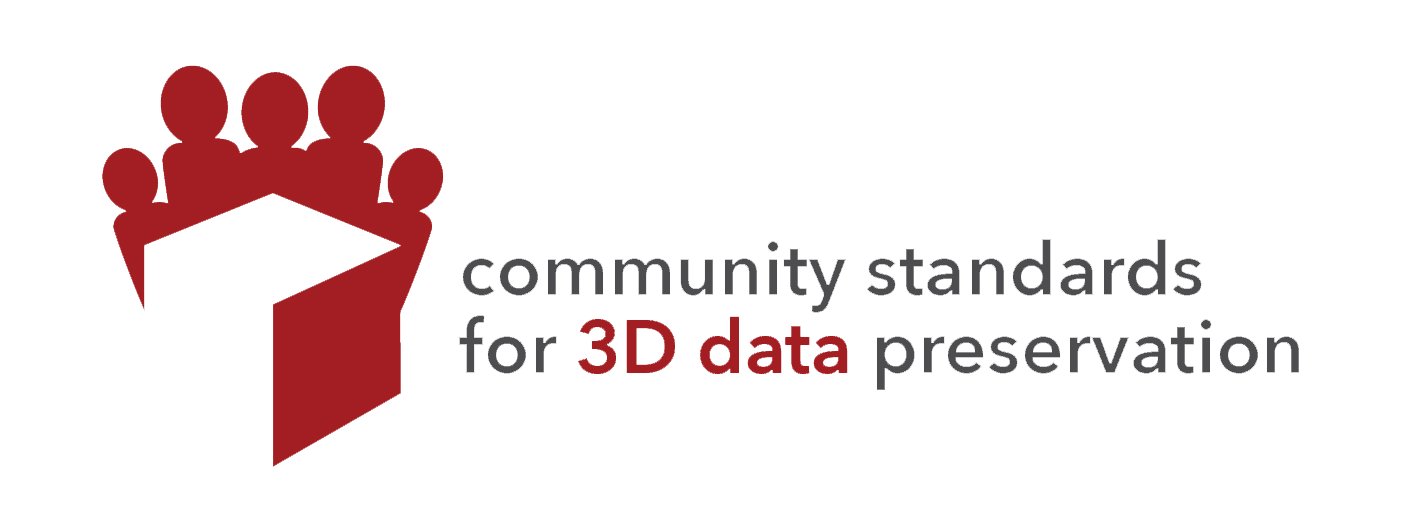
Rapid adoption of new technologies can sometimes result in the creation of vast quantities of poorly documented, at-risk data. While the immediate advantages of a breakthrough technology such as low-cost 3D scanning or high-speed photogrammetry (creating 3D models from a series of photographs) can quickly lead to widespread use, preservation of the resulting data is often overlooked and only considered when the stacks of external drives in the closet are starting to fall over. Indeed, several years ago, we found ourselves wondering if others were eyeing their rapidly accumulating 3D data with similar anxiety, and in 2017, we decided to conduct a survey targeted at those creating, using, and curating 3D data in various fields to find out. Most responses came from individuals at universities, libraries, and museums in the United States, and the majority of respondents were, as we suspected, not using documented best practices or standards for handling 3D data. Those who were had largely developed their own standards in house. Of those not using standards/best practices, 69% said that they did not use them because they were unaware of such standards. However, the vast majority (85%) of all respondents said they would like to develop standards and best practices collaboratively as a community. Survey comments, such as, “I am very excited to see that you are doing this survey and potentially pulling this community together,” from an expert at a leading museum captured the desire for progress in the area as well as the sense that successful standards development would require participation from diverse stakeholders. These results led to the development of the Community Standards for 3D Data Preservation (CS3DP) program.
DOCUMENT THIS. And this. And this, too.
Amy Rudersdorf is a Senior Consultant with AVP in the USA
As a consultant with AVP, I work with many different types of organizations to help them assess and optimize their digital preservation programs. I have the opportunity to really dig into the inner workings of these digital preservation environments. I've found that it is very common for institutions to have very little documentation relating to their digital preservation programs. Sure, you know what you're doing, but there are so many other reasons to create documentation!
Stewardship with a network logic
Brian Lavoie is Research Scientist for OCLC in the USA
An important class of at-risk digital materials is the myriad forms of output generated over the research lifecycle – think of data sets, computer code, online discussions, e-lab notebooks, and so on. Growing recognition of the value of these materials to the scholarly record has led to many efforts to collect and preserve them over the long term. But mitigating risks associated with preserving digital research outputs means setting up stewardship arrangements that are well-adapted to the evolving nature of today’s scholarly record. For that, we need stewardship with a network logic, or conscious coordination.
What if online services had a time dimension?
Euan Cochrane is Digital Preservation Manager at Yale University Library
Online web services are used by billions of people every day. They impact our lives and society in a myriad of ways. The way they present data to us and the ways they manipulate and transform the data we store in them have the potential to change behaviour and our understanding of the world. And this is all being done at a scale unimaginable in previous history. These services have changed greatly over time. Many of those changes are not publicly documented or even known to the general public. I’ve outlined a few of those we do know of below:
Preserving and Integrating Community Knowledge of Computing Systems
Ethan Gates is Software Preservation Analyst, Digital Preservation Services at Yale University Library in the USA
The efforts of the EaaSI (Emulation-as-a-Service Infrastructure) project and the Software Preservation Network to preserve the software and computing environments around digital objects have revealed that a parallel effort needs to be made to preserve the expertise and knowledge necessary to use and interact with such environments. Scanning software manuals and printed guidebooks, photographing boxes and physical media, archiving the web sites of developers, enthusiasts and community forums - all of these are necessary activities, largely happening on an ad hoc basis in the digital preservation community if at all. Dedicated, collaborative initiatives on this front are essential to make sure future users are able to interact with authentic digital objects in context.
One of the student workers we employ in the EaaSI program once came to me with a troubleshooting problem. This is not unusual - our diligent student team is tasked with cataloging and attempting to install a vast range of legacy software applications, and between quirks in the applications, quirks in the necessary operating systems, quirks in the emulators running them and quirks in Yale’s beta installation of the EaaSI platform, any number of questions can come up. The student was having trouble with an application running in MacOS 7.5: the menu bar at the top of the screen seemed to be glitching, constantly closing before they could access the settings and preference menus that are often our best source of information about a given piece of software (language configuration, file format capabilities, etc.)
Inspiring Confidence: Securing ARCW Security
Sally McInnes is Chair of the ARCW Digital Preservation Group and Head of Unique Collections and Collections Care at the National Library of Wales
It has been two years since the Archives and Records Council launched its National Digital Preservation Policy on International Digital Preservation Day, 2017. Since then, ARCW has made considerable progress in supporting the policy, the aims of which are to:
- To ensure digital resources of enduring value are selected for preservation and remain authentic and accessible in the future.
- To provide a framework for the development of digital preservation strategies that can be adapted for use by organisations throughout Wales, irrespective of their size and capacity.
- To raise awareness of the importance of effective Digital Preservation among archive institutions and practitioners, managers, information technology staff and stakeholders / decision makers.
Email at Risk: Challenges and Opportunities in Preserving Email
Sally DeBauche is Digital Archivist at Stanford University Libraries in the USA
Email offers singular insight into and evidence of a person or organization’s self-expression, as well as records of collaboration, professional, social, and familial networks, and all manner of transactions. Email is an essential component of the archival record -- the modern equivalent of the type or hand-written correspondence of past centuries. However, email is also a complex format that poses many technical challenges to archivists working to preserve and provide access to it. In their 2018 report, the Task Force on Technical Approaches for Email Archives described email as, “…not one thing, but a complicated interaction of technical subsystems for composition, transport, viewing, and storage.”
Compounding this complexity, email is not a constant or consistent format. As email technology has evolved and email clients have fallen in and out of use, archivists working with historical email collections will encounter a wide variety of email file types. Thus, the most essential tasks of capturing, processing, preserving, and providing access to email pose a host of technical obstacles for cultural heritage institutions.














































































































































